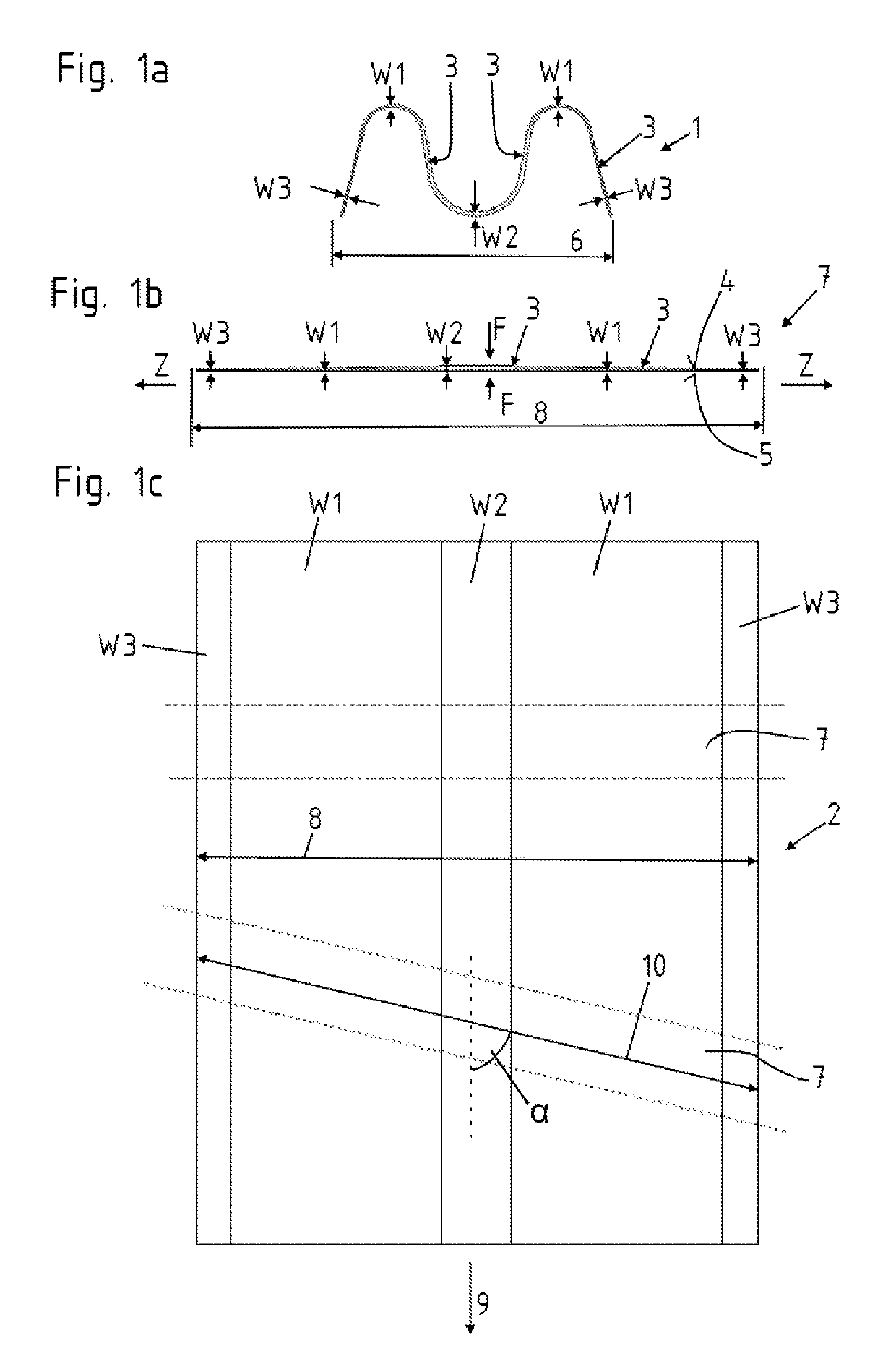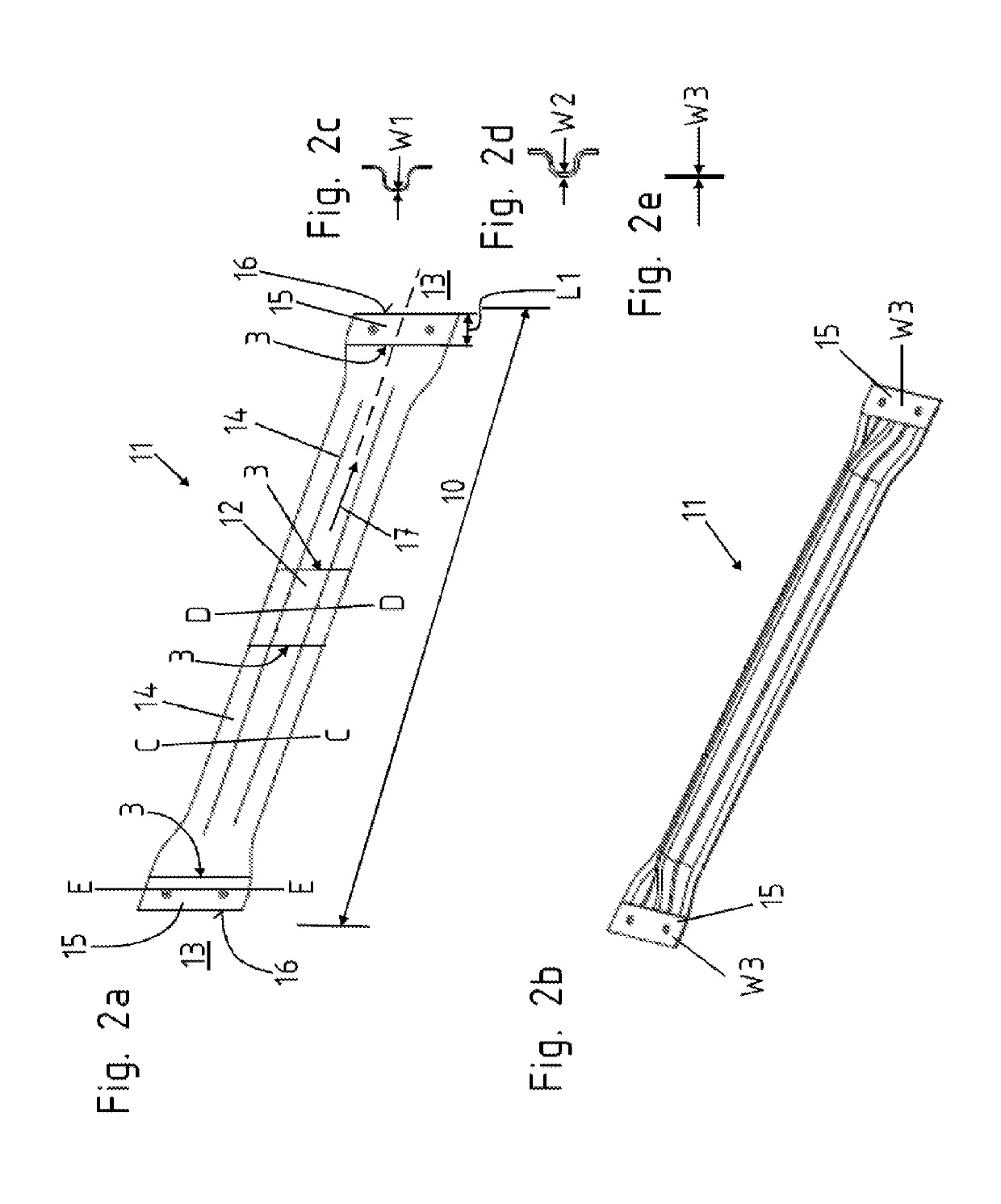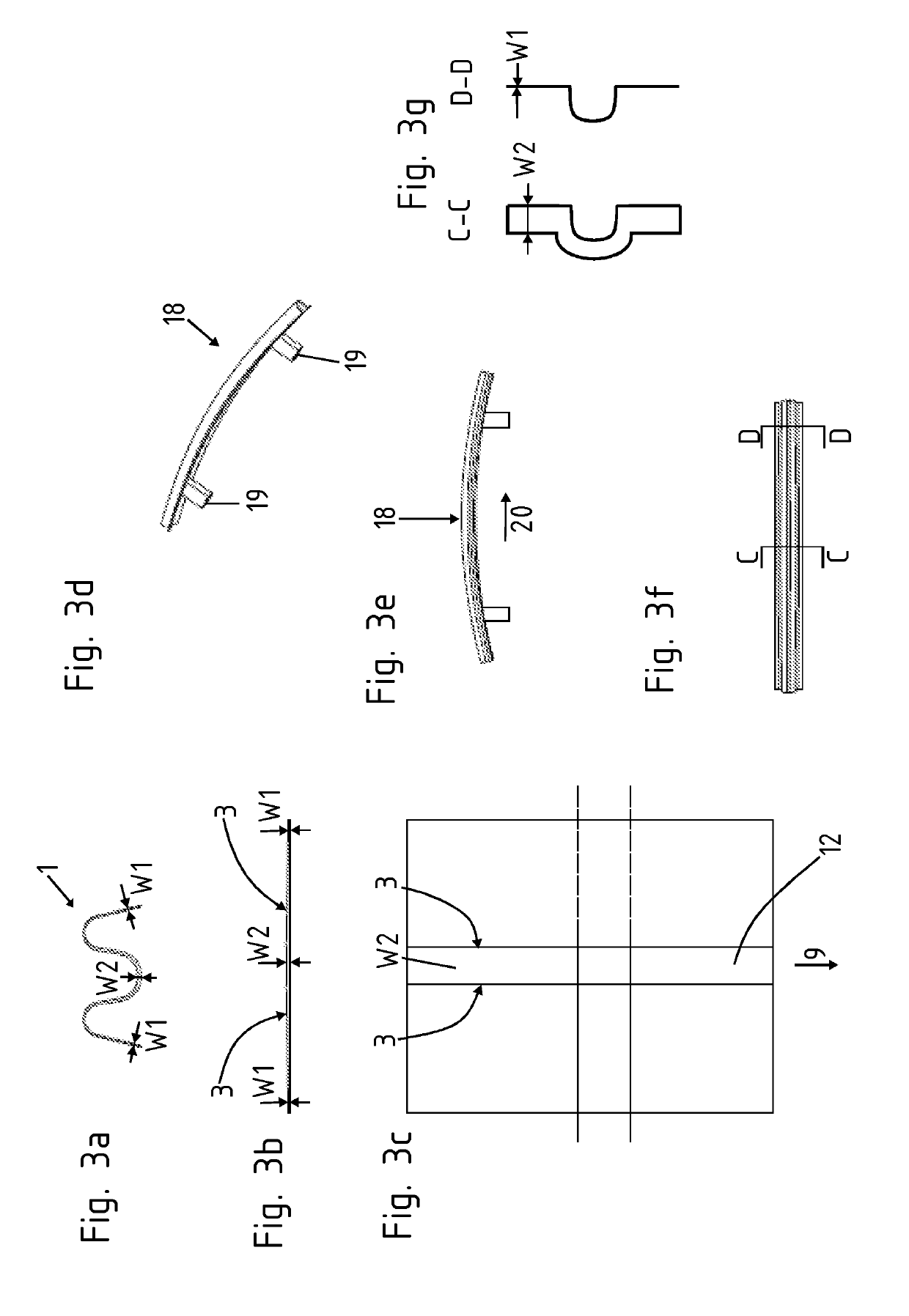Impact beam and method for producing an impact beam
a technology of impact beams and beams, which is applied in the direction of doors, transportation and packaging, vehicle sub-unit features, etc., can solve the problems of excessive weight of components, and achieve the effect of high degree of freedom in construction, weight optimization, and cost-effectiveness
- Summary
- Abstract
- Description
- Claims
- Application Information
AI Technical Summary
Benefits of technology
Problems solved by technology
Method used
Image
Examples
Embodiment Construction
[0044]FIGS. 1a to c show a method according to the invention for producing an extruded profile 1 by flattening and / or widening and separating and / or trimming the semi-finished products 7 produced thereby. According to FIG. 1a, an extruded profile 1 is produced with a wave-shaped and thus uneven cross section. In this case a centrally arranged wall thickness W2 which is larger than an external wall thickness W3 is present as well as a transition therebetween with the variable wall thickness W1 reducing from the wall thickness W2 to the wall thickness W3. The continuous thickness transition from the wall thickness W1 to the wall thickness W3 is thus easily able to be produced due to the extrusion. The change in wall thickness may be formed on only one side, for example the upper face 4, but also on the lower face 5 or on the upper face 4 and on the lower face 5 at the same time. This extruded profile 1 in turn has an extrusion width 6.
[0045]A flattening and / or widening is carried out ...
PUM
| Property | Measurement | Unit |
|---|---|---|
| angle | aaaaa | aaaaa |
| angle | aaaaa | aaaaa |
| angle | aaaaa | aaaaa |
Abstract
Description
Claims
Application Information
 Login to View More
Login to View More - R&D
- Intellectual Property
- Life Sciences
- Materials
- Tech Scout
- Unparalleled Data Quality
- Higher Quality Content
- 60% Fewer Hallucinations
Browse by: Latest US Patents, China's latest patents, Technical Efficacy Thesaurus, Application Domain, Technology Topic, Popular Technical Reports.
© 2025 PatSnap. All rights reserved.Legal|Privacy policy|Modern Slavery Act Transparency Statement|Sitemap|About US| Contact US: help@patsnap.com



